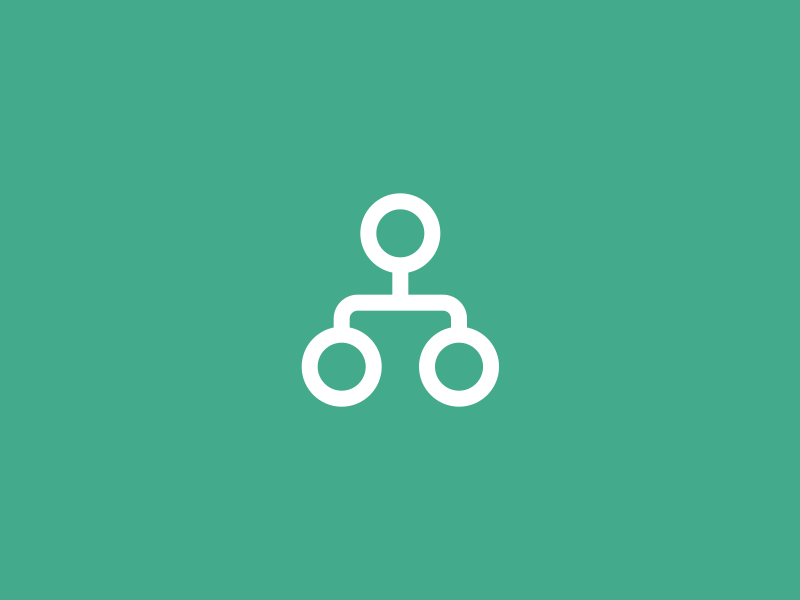The Difference Between Accountability Charts and Organizational Charts
Unravel the differences between accountability charts and organizational charts. Discover their unique benefits, ideal usage scenarios, and learn how to create an effective accountability chart for your team.

If you've been scratching your head trying to figure out the difference between an accountability chart and an organizational chart, you're in the right spot.
Both of these tools are fantastic for visualizing your company's structure and promoting effective communication and collaboration.
But, understanding their unique characteristics is key to deciding which one is the perfect fit for your organization. So, let's jump right in!
Accountability Charts: The Who's Who of Responsibilities
Accountability charts are a bit different from org charts. They focus more on the roles and responsibilities within an organization rather than the hierarchy. Here's what you'll typically find in these charts:
- Roles (not individual names)
- Main responsibilities tied to each role
- Reporting relationships (similar to org charts)
The Pros and Cons of Accountability Charts
The Pros: Accountability charts are like a roadmap for team organization. They clearly show who's in charge of what, making it easier for managers to track progress, assign tasks, and ensure deadlines are met. Plus, they're great for spotting areas that need more resources or where roles might overlap.
The Cons: Setting up an accountability chart can take a bit more time than creating an org chart. It often involves tracking more detailed information for each individual or team.
Why Accountability Charts are Great
- Clear as Crystal Responsibilities: Accountability charts lay out the primary responsibilities of each role, so employees know exactly what's expected of them.
- No More Guesswork: By focusing on roles rather than individuals, accountability charts help avoid confusion from overlapping responsibilities or multiple job titles.
- Teamwork Makes the Dream Work: Accountability charts highlight the interconnected nature of roles and responsibilities, encouraging employees to collaborate and support each other.
Organizational Charts: Your Company's Family Tree
An org chart is a classic diagram that shows the hierarchical structure of an organization. It's like a family tree for your company, showing the relationships between employees, teams, and departments. Typically, org charts include:
- Employee names
- Job titles
- Reporting relationships (shown by lines connecting boxes)
The Pros and Cons of Org Charts
The Pros: Org charts give you a bird's eye view of your organization's structure. They're great for spotting trends, redundancies, or staffing gaps, and they can also improve the overall understanding of how teams work together to achieve common goals.
The Cons: Org charts don't provide detailed information about individual roles or responsibilities within each team, which can make it tricky to hold individuals accountable for their performance.
The Perks of Org Charts
- Communication is Key: Org charts offer a clear view of reporting lines and team structures, helping employees know who to reach out to for specific information or help.
- Decisions, Decisions: By showing the chain of command, org charts make decision-making processes more efficient and help prevent bottlenecks.
- Welcome Aboard: New employees can use org charts to get to know team members and reporting relationships, making their transition into the company smoother.
When to Use Accountability Charts
Accountability charts are like a secret weapon for managing tasks and goals within teams or groups. They foster a sense of ownership and shared responsibility, ensuring everyone stays on track and contributes effectively to the bigger picture.
Let's look at some perfect scenarios for using accountability charts to boost your team's performance.
1. Juggling Multiple Tasks Across Teams
Accountability charts shine when used in teams or groups that handle multiple tasks. Instead of one person trying to keep track of everything, accountability charts ensure everyone is on the same page and owns their tasks. This keeps teams organized and provides clarity about individual responsibilities at each project stage.
2. Setting and Achieving Team Goals
Another prime time to use an accountability chart is when there are specific goals to meet. By setting team goals and assigning individual tasks, everyone can see how their contributions fit into the bigger picture. This fosters a sense of shared responsibility and keeps everyone motivated toward reaching the team's goals.
3. Encouraging Feedback and Open Dialogue
Accountability charts are also handy when you want feedback from your team members as they collaborate on a project or goal. With an accountability chart, you can easily track each individual's progress and offer guidance as needed throughout the project. This opens up a dialogue between team members, allowing them to discuss any challenges they may encounter along the way.
How to Craft an Accountability Chart for Your Team
If you're looking for a way to keep your team organized, an accountability chart is just the ticket. It lets you clearly define roles, responsibilities, and expectations so everyone is on the same page.
Here's a step-by-step guide on how to create an accountability chart for your team.
Step 1: Identify Roles and Responsibilities for Each Position
Start by identifying the roles and responsibilities of each position within your organization. List out each job title, the required skills for that position, and the tasks each employee will be responsible for. This will give you a clearer picture of who does what and ensure no important tasks are overlooked.
Step 2: Assign Ownership Over Specific Tasks
After identifying each role and its duties, assign ownership over specific tasks. Determine who is responsible for leading certain projects or initiatives and who will be accountable for completing them on time. Make sure this information is clearly communicated with all team members to avoid any surprises down the line.
Step 3: Set Clear Expectations
Next, set clear expectations for each role within your organization. Set measurable goals and objectives that employees can use to gauge their success, ensuring they meet their targets on time and with quality results. Also, make sure everyone knows when deliverables are due to avoid confusion or missed deadlines.
Step 4: Bring Your Accountability Chart to Life
Now that you've identified all the people involved in your project and assigned their respective roles and responsibilities, it's time to create the actual accountability chart.
You can use a spreadsheet or presentation software like PowerPoint or Google Slides to create a simple chart with columns listing each person's name and their corresponding tasks. Or, for a more visual representation, try a diagram-making tool like Lucidchart or Draw.io. Once your chart is created, make sure all team members know where to find it (e.g., on a shared drive) so that everyone stays up-to-date on their responsibilities.
Wrap Up
In the end, the choice between an organizational chart and an accountability chart isn't a binary one. Both have their place and can complement each other.
By understanding when to use accountability charts, you can effectively boost your team's efficiency, foster shared responsibility, and facilitate open communication. These charts not only help manage tasks and goals but also create a collaborative environment where everyone's contributions are valued and recognized.
So, harness the power of accountability charts and watch your team soar.


